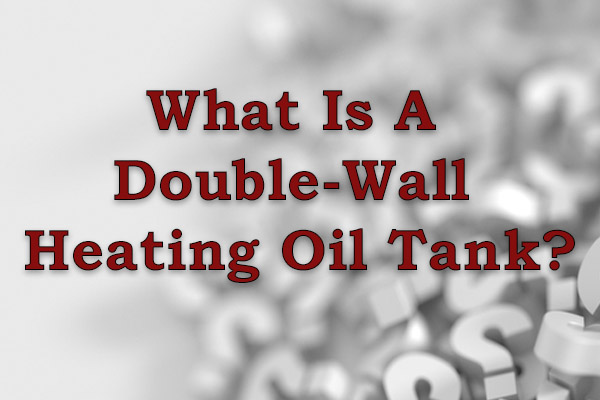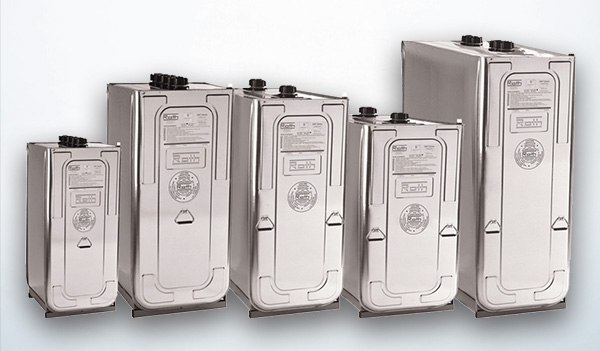Contents

Many households rely on heating oil as their primary fuel source. Stored in a tank on the premises, this oil is channeled to the furnace or boiler, bringing warmth to homes. For residents considering upgrading or replacing their current oil storage, the double-wall heating oil tank emerges as a notable choice. In the following article, we’ll delve into the specifics of this double-wall heating oil tank, its advantages, and why Wilcox Energy recommends it for homeowners.
Exploring the Concept of a Double-Wall Heating Oil Tank
The double-wall heating oil tank, recommended by Wilcox Energy for homes in Southern CT, is designed with a unique dual-layer structure. This tank consists of a primary internal tank encased by a secondary external tank. The gap between these two layers is termed the ‘interstitial space.’ This space is more than just a gap; it safeguards against potential leaks or spills from the internal tank, ensuring they don’t seep into our precious environment.
Wilcox Energy ensures this interstitial space is meticulously sealed and equipped with advanced monitoring systems. These include alarms and sensors promptly alerting homeowners to irregularities or potential breaches. If there were ever a leak, this design ensures that the interstitial space acts as a containment system, preventing the oil from escaping into the surroundings.
Additionally, these double-wall tanks come fitted with a safety feature known as a “spill bucket.” Nestled within the interstitial space, this container is designed to catch and hold minor leaks or spills, offering homeowners an added layer of protection and peace of mind.
Breaking Down the Functionality of the Double-Wall Heating Oil Tank
The inner tank, which is responsible for storing the fuel, is at the heart of the double-wall heating oil tank. Encasing this inner tank is the outer tank, which serves as a backup containment system. Should there be any breach in the inner tank resulting in a leak or spill, the fuel will be securely held within the interstitial space, avoiding any direct contact with the environment and thereby preventing potential hazards.
Advantages of Opting for a Double-Wall Heating Oil Tank

Opting for a double-wall heating oil tank presents several compelling benefits over its single-wall counterpart:
- Longevity and Durability: Double-wall tanks have the added edge regarding lifespan. Specifically, the outer layer of many double-wall tanks is crafted from high-density polyethylene (HDPE). This material boasts resilience against ultraviolet rays and is known to endure the challenges of extreme weather conditions. Thus, for those considering an outdoor tank installation in Southern CT, the double-wall option stands out as a superior and durable choice, endorsed by Wilcox Energy.
- Enhanced Protection: The standout advantage of the double-wall design is its robust defense against leaks and spills. With its dual barrier system, homeowners can rest assured knowing that the risk of environmental contamination is significantly reduced.
Unpacking the Double-Wall Heating Oil Tank’s Operation
Central to the double-wall heating oil tank is its internal tank dedicated to housing the fuel. An outer tank, which functions as a protective containment shield, encompasses this. When the internal tank experiences a leak or spill, the interstitial space between the tanks acts as a containment, ensuring the fuel doesn’t compromise the environment.
Why Choose a Double-Wall Heating Oil Tank?

There are distinct advantages when homeowners select double-wall heating oil tanks over their single-wall counterparts:
- Superior Safety: The primary allure of the double-wall design is its heightened protection from potential leaks and spills. With its layered defense mechanism, homeowners gain the confidence that threats of environmental harm are substantially minimized.
- Built to Last: One cannot overlook the longevity and robustness of double-wall tanks. Many of these tanks incorporate an outer high-density polyethylene (HDPE) shell. Known for its resistance to UV radiation and its ability to brave harsh weather elements, HDPE enhances the tank’s durability. For those contemplating an external tank setup, the double-wall design, championed by Wilcox Energy, emerges as the ideal, long-lasting solution.
Double-Wall Heating Oil Tank: Common Questions Answered

Below, we discuss some common questions about these types of fuel oil storage tanks.
Is the Double-Wall Heating Oil Tank Pricier than its Single-Wall Counterpart?
Yes, double-wall heating oil tanks typically carry a higher price tag than single-wall tanks. Here’s why:
- Material Costs: While the internal tank of both designs is composed of similar materials, the external tank of the double-wall model incorporates high-density polyethylene (HDPE). This is a pricier material than the steel or standard plastic predominantly used in single-wall tanks, leading to a higher cost.
- Intricate Manufacturing: The double-wall tank’s production process is more involved. Both the inner and outer tanks are crafted individually and subsequently combined. Ensuring the interstitial space is leak-proof further complicates and lengthens the manufacturing phase, adding to the overall expense.
- Installation Considerations: Setting up a double-wall heating oil tank is a more nuanced procedure compared to its single-wall counterpart. Ensuring the tanks are level and continuously monitoring the interstitial space for leaks contribute to the elevated installation costs.
- A Worthwhile Investment: While the initial outlay for double-wall tanks is greater, their extended durability positions them as a valuable long-term investment. Homeowners, particularly those serviced by Wilcox Energy in Southern CT, might find the upfront costs justified, given the potential long-term savings on repairs and replacements.
Remember, while there’s an upfront cost difference, the peace of mind, environmental safety, and longevity offered by the double-wall design can make it a more economical choice from a broader perspective.
Is an Indoor Installation of a Double-Wall Heating Oil Tank Possible?
Certainly, double-wall heating oil tanks can be accommodated indoors. However, some critical considerations come into play:
- Ventilation is Key: It’s paramount to position the tank in a space that boasts ample ventilation. This is to avert the buildup of potentially harmful fumes, ensuring the safety of those residing in the home.
- Adherence to Guidelines: Always adhere to the manufacturer’s guidelines when opting for an indoor setup. Equally important is ensuring compliance with your local building codes and stipulations. This is not just for regulatory purposes but also to safeguard the well-being of the home’s occupants.
- Added Safety Precautions: Given the indoor nature of the installation, introducing additional safety protocols can be beneficial. For instance, integrating a spill containment tray can prove instrumental in handling any accidental leaks or spills, mitigating potential hazards.
- Professional Guidance: To guarantee the installation is executed correctly and safely, seeking the expertise of a seasoned professional, like those at Wilcox Energy, is always advisable. Their insight can ensure that every aspect of the installation aligns with safety standards and regulatory mandates.
Is it Mandatory to Have Double-Wall Heating Oil Tanks?
The legal prerequisites surrounding double-wall heating oil tanks differ from one jurisdiction to another. Not every region mandates the use of double-wall tanks, but several states and localities emphasize the importance of secondary containment for fuel storage.
- New vs. Replacement Tanks: Some regulations distinctly require newly installed tanks to be of the double-wall design. In contrast, other jurisdictions might only stipulate this for tanks undergoing replacement.
- Retrofitting Existing Tanks: There are also areas where the prevailing rules demand that older, single-wall tanks be updated with secondary containment features. This could mean transitioning to a double-wall tank or incorporating a containment tray into the existing setup.
- Stay Informed and Compliant: Before making a decision, it’s advisable to consult with local regulatory bodies or professionals familiar with regional regulations, like those at Wilcox Energy. This ensures your chosen tank adheres to the law and guarantees safe and efficient fuel storage for your home.
In Summary
The double-wall heating oil tank is an exemplary fuel storage solution, offering an enhanced shield against potential leaks and spills. Its inherent design advantages, including superior durability and an integral secondary containment system, make it a top choice for homeowners considering upgrading their existing oil tank. While the initial cost might be higher compared to single-wall variants, the long-term benefits position it as a prudent investment from both a safety and durability standpoint. With Wilcox Energy’s endorsement, homeowners can confidently choose this solution, ensuring safety and longevity in their heating needs.
Call Wilcox Energy For Reliable Heating Oil Deliveries & HVAC Services

For top-notch service and competitive prices on heating oil deliveries and HVAC services, contact Wilcox Energy as soon as possible.
We offer a broad range of fuel delivery plans and financing options, which allow you to customize your oil deliveries to meet your specific needs. We also deliver Bioheat® heating oil, a blend of ultra-low sulfur heating oil and biodiesel. This liquid renewable fuel makes your home more eco-friendly and your heating system more efficient. It comes to you without any added cost.
In addition, we perform heating system repairs and maintenance for the purpose of enhancing the overall efficiency and functionality of all your home heating equipment. Contact Wilcox Energy for all of your residential heating needs. Click the link to view our service area.
For more information about our heating oil deliveries or HVAC services, be sure to contact Wilcox Energy. You can click here to contact us or call us at (860) 399-6218. Call now!
Related Articles:
